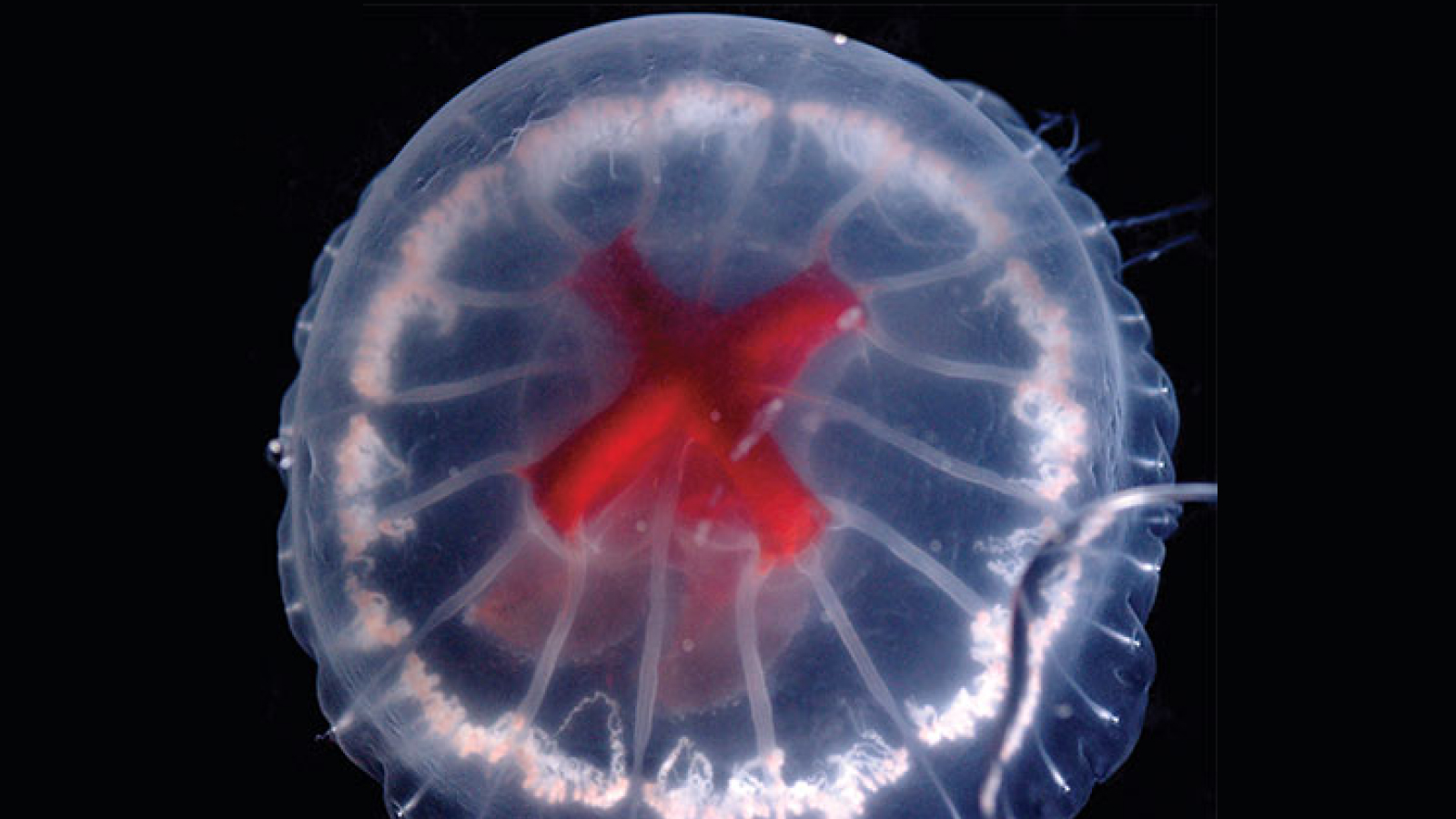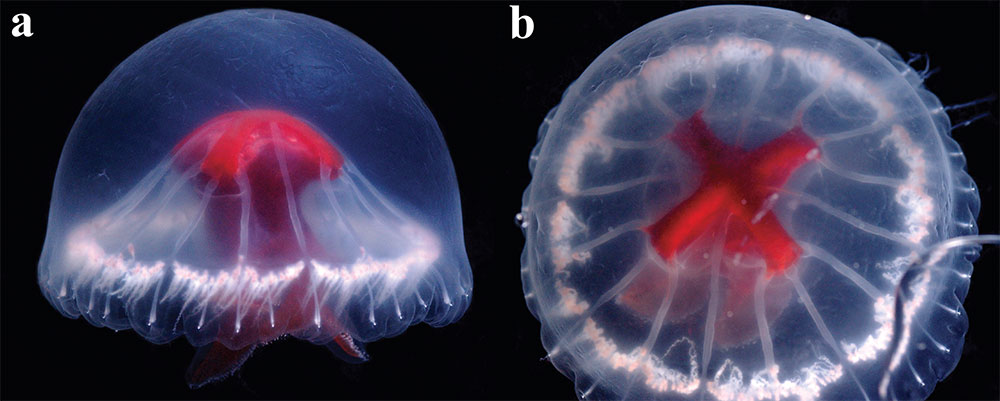Bizarre jellyfish with bright red cross for a stomach discovered in volcanic caldera off Japan
Newly described species of jellyfish with a red cross inside its translucent body is only found in the Sumisu caldera over 2,500 feet beneath the surface of the Pacific Ocean.

A strange,never-before-seen jellyfish with a distinctive stomach that looks like a red cross has been discovered inside a volcanic structure off the coast of Japan.
Researchers spotted the jellyfish, which has been named the St. George's cross medusa (Santjordia pagesi), 2,664 feet (812 meters) below the Pacific Ocean's surface near Japan's Ogasawara Islands. It was floating around the Sumisu caldera, a 6.2-mile-wide (10 kilometers) hydrothermally active volcano that sits on a volcanic arc, or chain of volcanoes, known as the Ring of Fire.
The umbrella-shaped jellyfish has a diameter of around 4 inches (10 centimeters) and is transparent, except for a bright red cross, which is visible when the creature is viewed from above.
The jellyfish is so rare it has only ever been spotted twice. It was first seen in 2002 by a remotely operated vehicle (ROV) during a dive in the Sumisu caldera. However, researchers could not describe a newfound species based on a single specimen, as it could have been a mutated individual belonging to an already-known species, according to a statement from the Japan Agency for Marine-Earth Science and Technology (JAMSTEC).
In 2020, scientists revisited the region and spotted the mysterious jellyfish again. While they were unable to collect a sample, they filmed the jellyfish swimming around.
This second encounter enabled them to describe the jellyfish as a unique species. The team reported its findings in a study published Nov. 20, 2023, in the journal Zootaxa.
Sign up for the Live Science daily newsletter now
Get the world’s most fascinating discoveries delivered straight to your inbox.

The unusual cross shape at the center of S. pagesi is the jellyfish's stomach. The color helps to disguise the jellyfish and the food it consumes from predators in its dark, deep-sea home. Much of the creature's diet consists of bioluminescent organisms that glow in the dark — having a red stomach diminishes the light they emit, protecting the jellyfish from predators after it has eaten its meal.
S. pagesi differs a great deal to its closest relatives, which include large, deep-sea jellyfish such as Tiburonia granrojo and the giant phantom jelly Stygiomedusa gigantea, according to the statement. The newfound species is much smaller and, unlike its relatives, has tentacles as well as arms, which it uses for feeding. Because of its unusual traits, researchers believe S. pagesi may have a never-before-seen type of venom that could be used in genetic research, for example, in medicines.
The caldera where the jellyfish lives is rich in minerals and could potentially be commercially developed for deep-sea mining. The researchers published information about the jellyfish to try to protect the area and its marine life.
"Maybe it holds secrets more valuable than all the mineral wealth that could be extracted from that place. All this with the advantage of keeping the species and the site intact," André Morandini, a professor of zoology at the University of São Paulo's Institute of Biosciences and part of the research team, said in a statement.

Lydia Smith is a health and science journalist who works for U.K. and U.S. publications. She is studying for an MSc in psychology at the University of Glasgow and has an MA in English literature from King's College London.









